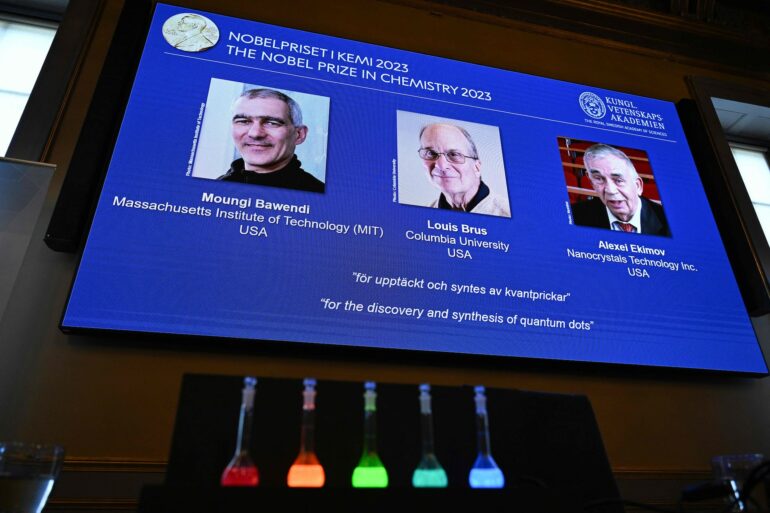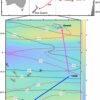The Nobel Prize in chemistry for 2023 goes to three scientists “for the discovery and synthesis of quantum dots.” The Conversation Weekly podcast caught up with one of this trio, physical chemist Louis Brus, who did foundational work figuring out that the properties of these nanoparticles depend on their size. Brus’ phone was off when the Nobel reps called to inform him of the good news, but now plenty of people have gotten through with congratulations and advice. Below are edited excerpts from the podcast.
When you were working at Bell Labs in the 1980s and discovered quantum dots, it was something of an accident. You were studying solutions of semiconductor particles. And when you aimed lasers at these solutions, called colloids, you noticed that the colors they emitted were not constant.
On the first day we made the colloid, sometimes the spectrum was different. Second and third day, it was normal. There certainly was a surprise when I first saw this change in the spectrum. And so, I began to try to figure out what the heck was going on with that.
I noticed that the property of the particle itself began to change at a very small size.
What you’d found was a quantum dot: a type of nanoparticle that absorbs light and emits it at another wavelength. Crucially, the color of these particles changes depending on the actual size of the particle. How do you even see a quantum dot crystal, since one is just a few hundred thousandths the width of a human hair?
Well, you can’t see them with an optical microscope because they’re smaller than the wavelength of light. There are ways to see them too, using other types of specialist microscopes, such as an electron microscope. And a common way of demonstrating them is to line up a row of brightly colored glass flasks each with a solution of different sized quantum dots inside it.

A quantum dot is a crystal that often consists of just a few thousand atoms. In terms of size, it has the same relationship to a soccer ball as a soccer ball has to the size of the Earth.
Johan Jarnestad/The Royal Swedish Academy of Sciences, CC BY-ND
One of your fellow laureates, Alexei Ekimov, was a Russian scientist, and he’d actually observed quantum dots in colored glass, but you weren’t aware of his findings at the time?
Yes, that’s right. The Cold War was going on at that time, and he published in the Russian literature, in Russian. And he wasn’t allowed to travel to the West to talk about his work.
I asked around among all the physicists, was there any work on small particles? I was trying to make a model of the quantum size effects. And they told me no, nobody’s really working on this. Nobody had seen his articles, basically.
I was part of the U.S. chemistry community, doing synthetic chemistry in the laboratory. He was in the glass industry in the Soviet Union, working on industrial technology.
When I eventually found his articles in the…



